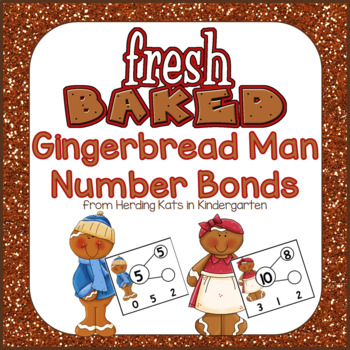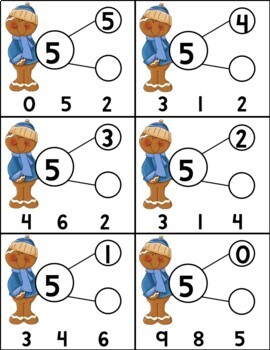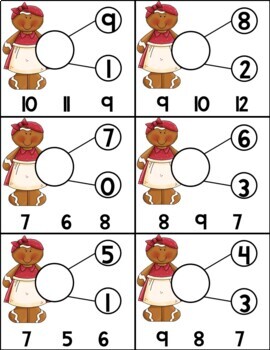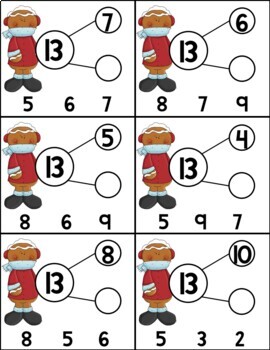Gingerbread Man Addition Number Bonds
Herding Kats in Kindergarten
9.7k Followers
Grade Levels
K - 1st
Subjects
Resource Type
Standards
CCSSK.OA.A.5
CCSS1.OA.C.6
Formats Included
- PDF
Pages
20 pages
Herding Kats in Kindergarten
9.7k Followers
What educators are saying
This was great to use as independent work and for students to show what they have learned. Thanks for the hard work you put into creating it.
Description
Gingerbread Man Number Bonds: This is a fun math activity for learning number bonds! Students use clothespins to mark the correct whole or part to complete the number bond.
120 Cards Included:
12 cards for number bonds from 0-4
48 cards for numbers bonds for 5-10:
- 36 missing addends cards
- 12 missing sums cards
60 cards for number bonds from 11-20
If you place a small sticker on the back of the card behind the correct answer this becomes a self-checking activity!
You Might Also Like:
• Gingerbread Man Activities Pack
• Gingerbread Man Activities: Graphing
• Gingerbread Man Activities: Letters & Sounds!
• Gingerbread Man Activities: Math Centers
• Gingerbread Man Activities: Rhyming
• Gingerbread Man Activities: Sight Words
• Gingerbread Man CVC Words Activity
• Gingerbread Man Emergent Readers
Total Pages
20 pages
Answer Key
N/A
Teaching Duration
N/A
Report this resource to TPT
Reported resources will be reviewed by our team. Report this resource to let us know if this resource violates TPT’s content guidelines.
Standards
to see state-specific standards (only available in the US).
CCSSK.OA.A.5
Fluently add and subtract within 5.
CCSS1.OA.C.6
Add and subtract within 20, demonstrating fluency for addition and subtraction within 10. Use strategies such as counting on; making ten (e.g., 8 + 6 = 8 + 2 + 4 = 10 + 4 = 14); decomposing a number leading to a ten (e.g., 13 - 4 = 13 - 3 - 1 = 10 - 1 = 9); using the relationship between addition and subtraction (e.g., knowing that 8 + 4 = 12, one knows 12 - 8 = 4); and creating equivalent but easier or known sums (e.g., adding 6 + 7 by creating the known equivalent 6 + 6 + 1 = 12 + 1 = 13).





